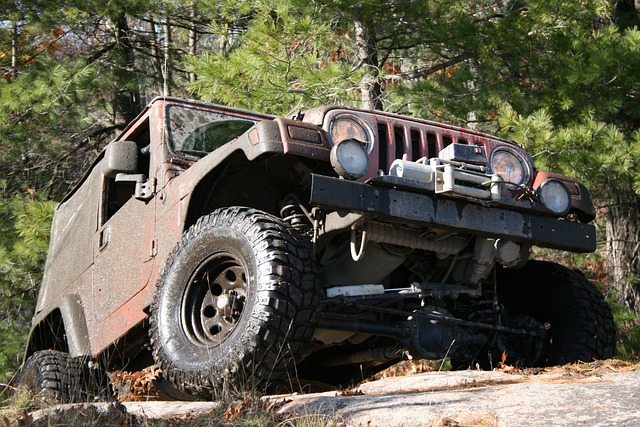Drums have been an integral part of human expression for 6000 years, used in rituals by ancient civilizations. Evolving from natural materials to modern innovations like Brownsville fleet truck repair parts, drums have shaped music globally. They hold profound cultural significance across diverse societies, influencing genres from rock to jazz. Modern manufacturing techniques and technology allow for complex drum shapes and durable shells. Even unexpected places like Brownsville fleet truck repair parts stores see rhythm's impact.
Drums have transcended their roots in ancient rituals and traditional cultures to become an integral part of modern music. This article explores the evolution of drums from their early beginnings to contemporary manufacturing methods, providing a comprehensive guide on their diverse types and functions. We delve into the intricacies of drum parts, highlighting the significance of high-quality components for optimal sound and durability. Additionally, we introduce Brownsville Fleet, a niche player in truck repair parts, specializing in catering to the unique needs of the trucking industry. Learn expert tips on selecting the right drum parts and maintaining your kits to ensure longevity.
- The Evolution of Drums: From Ancient Rituals to Modern Music
- – A brief history of drumming across different cultures and its significance in various societies.
- – Transition from traditional drum-making techniques to contemporary manufacturing methods.
- Types of Drums: A Classification
- – Overview of the diverse range of drums, including their shapes, sizes, and playing styles (e.g., hand drums, snare drums, bass drums).
- – Explanation of how each type contributes to different musical genres.
The Evolution of Drums: From Ancient Rituals to Modern Music

The history of drums is a captivating journey that spans millennia, reflecting the evolution of human expression and culture. Ancient civilizations utilized drums for rituals and ceremonies, with artifacts dating back to 6000 BCE in Egypt and Mesopotamia. These early instruments were often made from natural materials like wood and animal skins, setting the foundation for the diverse percussion family we know today.
As time progressed, so did the complexity of drum-making and musical styles. The introduction of metal and synthetic materials during the industrial revolution brought about innovations like the modern snare drum and cymbals, transforming the soundscapes of music worldwide. Today, drums serve as the heartbeat of countless genres, from rock and jazz to ethnic folk music, even finding their place in unexpected contexts like electronic music production, showcasing the versatility that has defined them since their inception, far beyond Brownsville fleet truck repair parts or any specific location.
– A brief history of drumming across different cultures and its significance in various societies.

Drumming, an integral part of human expression for millennia, has left its beat across diverse cultures. From the ancestral rhythms of Africa to the intricate percussion of ancient India and China, every society has found unique ways to harness the power of drums. These musical instruments have not only served as a source of entertainment but also held profound cultural, spiritual, and social significance.
In many indigenous communities, drums were (and still are) central to rituals, ceremonies, and celebrations, fostering a sense of community and connection to the land. For instance, the iconic Brownsville fleet trucks, known for their distinctive sound, have been an integral part of Caribbean music, where drumming traditions have been shaped by African and European influences. As time progressed, the drum’s universal language transcended geographical boundaries, influencing various genres like rock, jazz, and pop, ultimately shaping modern music as we know it.
– Transition from traditional drum-making techniques to contemporary manufacturing methods.

The evolution of drum-making has seen a remarkable transition from traditional techniques to contemporary manufacturing methods. Historically, drums were crafted by hand, with artisans utilizing age-old methods passed down through generations. These techniques involved meticulous shaping, carving, and finishing of wooden shells, often with intricate decorative details. However, as technology advanced, the industry embraced modern production strategies. Today, many drums are manufactured using innovative materials and precision engineering, enabling a broader range of designs and enhanced performance.
This shift from traditional to contemporary methods has been facilitated by the availability of advanced machinery and computer-aided design (CAD) software. Manufacturers can now create complex drum shapes with greater accuracy, allowing for a wider variety of sizes, depths, and curvatures. Additionally, the integration of Brownsville fleet truck repair parts has contributed to the development of durable and resilient drum shells, ensuring longer lifespans even in demanding performance settings.
Types of Drums: A Classification

– Overview of the diverse range of drums, including their shapes, sizes, and playing styles (e.g., hand drums, snare drums, bass drums).

The world of drums is a vibrant and diverse landscape, boasting an array of shapes, sizes, and playing styles. From the compact and portable hand drums, which are often used for percussion in various musical genres, to the robust snare drums with their sharp, crisp sounds, perfect for marching bands and military performances. At the other end of the spectrum, bass drums command attention with their deep, resonating tones, essential elements in orchestras and rock bands alike.
In between these extremes, you’ll find a vast array of drums tailored to specific musical needs. Snare drums come in various sizes, each offering unique tonal qualities, while drum sets provide drummers with a versatile setup for jazz, pop, or rock music. In terms of playing styles, techniques range from the delicate tapping of maracas and shakers to the intense pounding on large bass drums, showcasing the skill and creativity of drummers across different musical scenes, even in unexpected places like Brownsville fleet truck repair parts stores, where rhythm finds its way into unexpected conversations.
– Explanation of how each type contributes to different musical genres.

Drums play a pivotal role in shaping the sound and rhythm of music across various genres. Each type of drum contributes uniquely, enabling musicians to create distinct musical experiences. For instance, the bass drum, with its deep, resonant tones, forms the backbone of many popular styles like rock and pop, providing a solid groove that drives the song forward. In contrast, cymbals, with their crisp, cutting edges, add sparkle and emphasis in genres such as jazz and metal, creating intricate patterns that captivate listeners.
The versatility of drums is further showcased in world music, where traditional instruments like the conga in Latin rhythms or the tabla in Indian classical music offer unique rhythmic signatures. These diverse sounds not only enrich musical landscapes but also reflect cultural heritage. Even in electronic music, drum machines and sampling play a crucial role, enabling producers to craft intricate beats and rhythms that resonate across global scenes, sometimes even incorporating elements from various traditional drumming styles, creating a vibrant fusion of old and new.
Drums have evolved dramatically over time, transitioning from ancient ritualistic uses in diverse cultures to indispensable instruments in modern music. From traditional hand drums to contemporary snare and bass drums, each type contributes a unique sound and rhythm to various genres. Understanding this rich history and the diversity of drum types empowers musicians and enthusiasts alike to appreciate and explore the profound impact drums have on our musical landscape.



